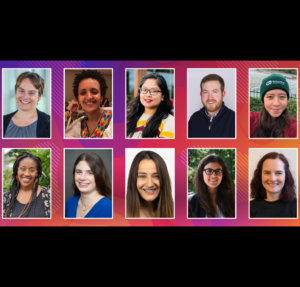A Canadian network focused on rare diseases is playing matchmaker between clinicians and model organism researchers.
Over half of children with rare, inherited monogenic diseases lack a molecular diagnosis. There are an estimated 7,000 monogenic diseases possible, and only about half of those have been implicated in human disease. The Rare Diseases: Models & Mechanisms (RDMM) Network is addressing this by giving clinicians easy access to researchers who use model organisms to study their new gene of interest.
There are a few hurdles associated with rare disease gene discovery, not least of which is that the definition of rare disease is one that affects fewer than 200,000 people in the US or fewer than 1 in 2,000 people in the EU. Along with the heterogeneity of the clinical features in many of these diseases, the low number of those affected makes it harder to identify patients that share mutations in the same causative gene. As the cost of diagnostic sequencing continues to fall, however, clinicians can obtain detailed sequence information on their patients. The next step then lies in turning that sequence data into actionable information. That’s where the RDMM Network comes in.
“The ability for clinicians to now rapidly be linked to a model organism researcher is a critical step in bringing the gene discovery back to the family in the clinic where it all started,” says Kym Boycott, RDMM Network leader and GENETICS Associate Editor.
Together with Boycott (University of Ottawa and Children’s Hospital of Eastern Ontario), former GSA President Phil Hieter (University of British Columbia) and Janet Rossant (University of Toronto and Hospital for Sick Children) make up the RDMM Network leadership. Established with funding from the Canadian Institute of Health Research, the RDMM Network joins a group of other Canadian organizations – including FORGE Canada and Care4Rare Canada – already working towards rare disease gene discovery.
When clinicians discover a possible disease gene, they can submit the gene to the Network’s Clinical Advisory Committee. If it’s approved there, it goes on to the Scientific Advisory Committee; their job is to match the disease gene to model organism researchers who have already declared an interest in that gene or pathway. The model organism researchers can then submit a short application, and if it’s successful, the RDMM Network will put the clinician and model researcher in touch with each other and make available a $25,000 seed grant to the model organism researcher so that an immediate collaboration can be started.
“The network represents a model to the world for enhancing collaboration at the basic science/rare disease interface,” says Phil Hieter.
The RDMM Network is an example of the forward-thinking approach needed in biomedical research to make progress on identifying new disease genes and understanding their biological mechanisms. By encouraging collaboration between the bedside and the bench, we can expand our knowledge of rare human diseases – and how to treat them.
Canadian model organism researchers can register their genes of interest here, and Canadian clinician scientists can submit a newly discovered disease gene here.
CITATIONS AND FURTHER READING
Beaulieu C.L., Majewski J., Schwartzentruber J., Samuels M.E., Fernandez B.A., Bernier F.P., Brudno M., Knoppers B., Marcadier J., Dyment D., Adam S., Bulman D.E., Jones S.J.M., Avard D., Ngyuen M.T., Rousseau F., Marshall C., Wintle R.F., Shen Y., Scherer S.W., FORGE Canada Consortium, Friedman J.M., Michaud J.L., Boycott, K.M. 2014. FORGE Canada Consortium: Outcomes of a 2-Year National Rare-Disease Gene-Discovery Project. Am J Hum Genet, 94(6):809-817. doi: 10.1016/j.ajhg.2014.05.003 http://www.cell.com/ajhg/abstract/S0002-9297(14)00223-7
Foley K.E. 2015. Model network: Canadian Program Aims to Generate Models for Rare Disease. Nat Med, 21:1242-1243. doi: 10.1038/nm1115-1242
http://www.nature.com/nm/journal/v21/n11/full/nm1115-1242.html
Hieter P., Boycott K.M. 2014. Understanding Rare Disease Pathogenesis: A Grand Challenge for Model Organisms. Genetics, 198(2):443-445. doi: 10.1534/genetics.114.170217 http://www.genetics.org/content/198/2/443.full













